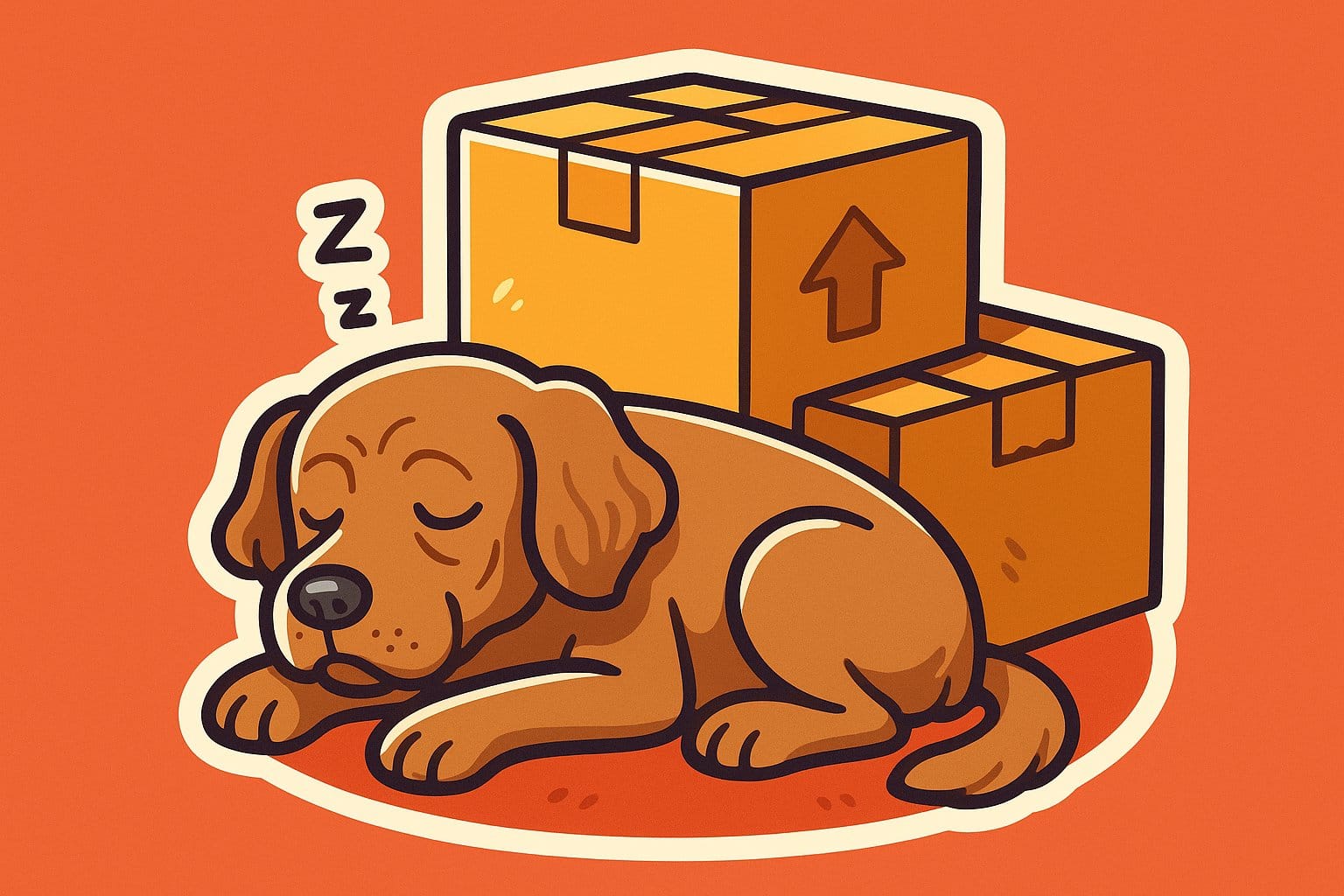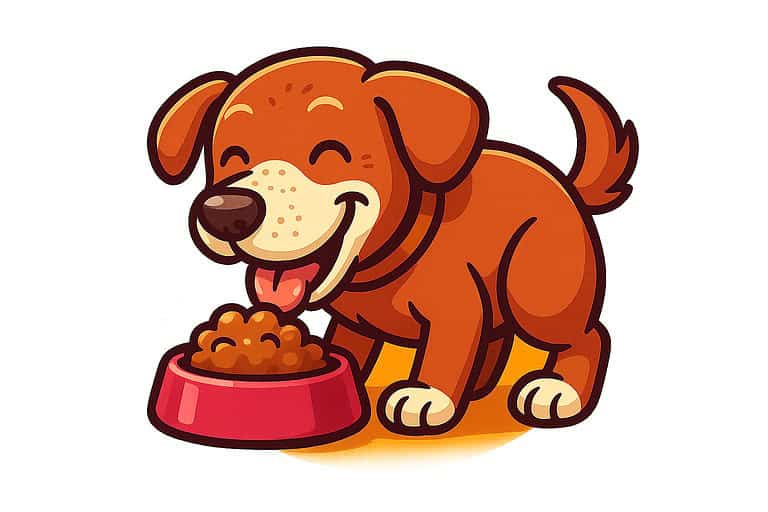Helping Your Senior Dog Stay Relaxed Through Life Changes

Old age brings wisdom, but it can also bring anxiety when your senior dog faces changes in their routine or environment. Maybe you’ve noticed your once-adaptable pup now gets stressed by things that never bothered them before, like rearranged furniture or a new walking schedule.
As dogs age, their brains process new situations differently, making them more sensitive to disruptions in their familiar world. Understanding why this happens and learning specific techniques can make all the difference.
You’ll find out how aging affects your dog’s ability to cope with change, practical strategies for smoother transitions, and ways to build your dog’s emotional resilience. Sometimes, you might need professional help, and it’s important to care for yourself while caring for your senior companion.
Understand Life Changes for Senior Dogs
Senior dogs process changes differently than younger dogs. Even small shifts in routine can feel overwhelming to them.
Recognizing what makes change difficult for older dogs and spotting early stress signals helps you support them through transitions more effectively. It’s not always obvious, but those subtle changes in behavior can tell you a lot.
Why Change Feels Different for Older Dogs
Your senior dog’s brain doesn’t adapt to new situations as quickly as it used to. Like older people, aging dogs rely more on familiar routines and predictable environments to feel secure.
Physical changes make adaptation harder too. If your dog’s hearing isn’t as sharp, sudden changes in the household might startle them more easily.
Vision problems can make new furniture arrangements confusing or even scary. It’s a lot to process for a dog who just wants to nap in peace.
Cognitive changes play a big role here. Senior dogs often develop mild cognitive decline, similar to early dementia in humans.
Learning new routines can feel genuinely difficult, not just stubborn. Their energy levels are lower now, too.
While a young dog might bounce back from stress quickly, your senior needs more time to recover from any disruption to their normal day. Imagine if someone moved your coffee maker every morning—frustrating, right? That’s how your senior dog feels when their world keeps shifting.
Common Life Changes in a Senior Dog’s World
Household changes affect senior dogs deeply. Moving homes, new family members, or even rearranging furniture can trigger anxiety.
Your dog has spent years memorizing the layout of your home. Schedule disruptions hit hard too.
Maybe you started a new job with different hours, or the kids went back to school. Your dog notices when their walk time shifts or when their favorite human isn’t around as much.
New pets or visitors can overwhelm a senior dog who prefers peace and quiet. While they might have loved meeting new friends before, now they might just want their space.
Medical appointments become more frequent as dogs age. More vet visits, medications, or treatments create ongoing stress.
Some dogs start getting anxious just hearing car keys jingle. Seasonal changes affect senior dogs more than you might expect.
Their joints hurt more in cold weather, and they might struggle with temperature regulation. These shifts add up fast.
Recognizing Stress Signals in Your Senior Dog
Your senior dog shows stress differently than when they were younger. Physical signs include excessive panting when it’s not hot, drooling more than usual, or trembling without an obvious cause.
Behavioral changes often stand out. Maybe your usually calm dog starts pacing at night, or your social pup suddenly hides when guests arrive.
Some senior dogs become clingy and follow you everywhere. Sleep pattern changes signal stress too.
Your dog might sleep more during the day but seem restless at night. Or they might wake up frequently, looking confused about where they are.
Appetite changes happen quickly when senior dogs feel stressed. They might skip meals entirely or become pickier about their food.
Some dogs go the opposite direction and stress-eat. Bathroom accidents in previously house-trained dogs often indicate anxiety, not just physical problems.
If your dog suddenly has accidents near doors or windows, they might be stressed about changes outside. Watch for repetitive behaviors like excessive licking, circling, or staring at walls.
These can develop when your senior dog feels overwhelmed by changes they can’t control.
How Aging Affects Your Dog’s Response to Change
As your dog gets older, their body and mind go through significant changes. Adapting to new situations becomes much more challenging.
Physical limitations, mental shifts, and a lifetime of experiences all work together to make your senior dog less flexible when facing changes in their routine or environment.
Physical and Emotional Shifts With Age
Your senior dog’s body isn’t what it used to be, and this directly affects how they handle change. Joint pain and stiffness make moving around harder, so a simple room rearrangement might suddenly feel overwhelming.
Vision and hearing loss are common in older dogs. Imagine how confusing it would be if you couldn’t see or hear properly—your dog feels that way when you move their food bowl to a different spot.
Their energy levels drop significantly. Where they once bounced back from exciting events, they now need much more recovery time.
Sleep patterns change too. Your dog might sleep more during the day and feel restless at night.
This disrupted sleep makes them more sensitive to any disruptions in their environment. Emotional changes are just as important.
Senior dogs often become more anxious and less confident. They prefer familiar surroundings because new situations feel scarier than they used to.
Their tolerance for stress decreases dramatically. What once rolled off their back—like visitors or loud noises—now feels much more intense and overwhelming.
Cognitive Changes in Senior Dogs
Your dog’s brain ages just like yours does. Memory problems become more common, making it harder for them to remember new routines or adapt to changes.
Learning ability slows down. Teaching an old dog new tricks isn’t impossible, but it takes much longer and requires more patience than before.
Confusion increases, especially in unfamiliar situations. Your dog might seem lost or disoriented when faced with changes they would have handled easily when younger.
Awareness levels decrease. They might not notice things happening around them as quickly, which makes sudden changes more startling and stressful.
Problem-solving skills decline. If their usual path to the backyard is blocked, they might stand there confused instead of finding an alternative route.
Some dogs develop canine cognitive dysfunction, similar to dementia in humans. This makes any change in routine particularly difficult to process and accept.
Impact of Previous Experiences
Your dog’s lifetime of experiences shapes how they react to changes in their senior years. Dogs with positive early socialization typically handle changes better than those with limited exposure.
Traumatic experiences from the past often resurface as dogs age. A dog who had a bad vet visit years ago might become increasingly anxious about any change that reminds them of that experience.
Previous successful adaptations can work in your favor. If your dog moved houses successfully when younger, they might handle future changes with more confidence.
Attachment patterns become stronger with age. Dogs who were always independent might suddenly become clingy, while naturally anxious dogs often become even more dependent on routine.
Health scares leave lasting impressions. A dog who experienced a serious illness might become more resistant to changes that involve leaving home or meeting new people.
The cumulative effect of positive or negative experiences shapes your senior dog’s resilience to change.
Tips for Making Transitions Easier for Your Senior Dog
Senior dogs need extra patience and care when facing new situations. Creating familiar spaces and keeping steady routines can help your older dog feel secure during changes.
Setting Up a Familiar Environment
Your senior dog finds comfort in recognizable scents and objects from home. When moving to a new place, pack their favorite blanket, toys, and bed first.
Place these familiar items in the area where your dog will spend most time. This creates an instant comfort zone.
Their old water bowl and food dish matter more than you might think. Keep their sleeping area quiet and away from high-traffic zones.
Senior dogs tire easily and need peaceful spaces to rest. If you’re moving homes, set up their space before exploring other areas.
This gives them a safe base to return to when feeling overwhelmed. Sometimes, just seeing their favorite bed can make a world of difference.
Maintaining a Consistent Routine
Your senior dog’s internal clock depends on predictable daily patterns. Feed them at the same times each day, even during transitions.
Walk schedules should stay as close to normal as possible. If your usual route changes, keep the timing consistent.
This helps reduce anxiety about other changes happening around them. Senior dogs often develop bathroom schedules that work for their aging bodies.
Disrupting these patterns can lead to accidents and stress. Try to maintain the same person handling key activities like feeding and walks.
Familiar voices and gentle handling become even more important as dogs age. It really does help them feel grounded.
Introducing Changes Gradually
Never rush your senior dog into new situations. Their minds and bodies need more time to process changes than younger dogs.
Start with short exposures to new environments. A 10-minute visit to a new house works better than moving everything at once.
Introduce new people slowly. Let your dog approach strangers rather than having them come directly over.
Senior dogs may have vision or hearing changes that make surprises stressful. If your dog seems overwhelmed, step back to the previous comfort level.
Some senior dogs need weeks to fully adjust, and that’s perfectly normal. Remember, what seems like a small change to you might feel huge to your older dog.
Their world has gotten smaller, so patience with the process helps them feel secure.
Soothing Strategies for Everyday Calm
Creating a peaceful environment involves three key elements: using familiar items that comfort your senior dog, applying gentle calming techniques, and establishing quiet retreat areas. These simple changes can make a big difference in how relaxed your dog feels throughout the day.
Comfort Items and Familiar Scents
Your senior dog finds comfort in things that smell like home and feel familiar. Maybe you’ve noticed how your dog always gravitates toward that old blanket or favorite toy?
Keep these comfort items accessible. A worn piece of your clothing can help, too.
Familiar scents work like magic for anxious senior dogs. You can place a shirt you’ve worn near their sleeping area.
The smell of their family provides instant comfort when they feel confused or stressed. Consider rotating comfort items if your dog seems restless.
Sometimes a fresh arrangement of familiar things can spark new interest while maintaining that sense of security.
Calming Techniques and Products
Gentle massage works wonders for tense senior dogs. Start with light strokes along their back and shoulders.
Many dogs love having their ears rubbed softly. Slow, rhythmic petting helps—use long strokes rather than quick pats.
Soft background music can relax both of you. Classical music or nature sounds work well.
Calming pheromone diffusers release dog-appeasing pheromones. Some people swear by weighted blankets designed for dogs.
Have you tried talking to your dog in a calm, low voice? Your tone matters more than your words.
Avoid high-pitched or excited speech when your dog seems anxious. Some senior dogs respond well to gentle brushing sessions.
The repetitive motion soothes both of you and strengthens your bond. It’s a simple thing, but it can make a difference.
Quiet Zones and Safe Spaces
Every senior dog needs a quiet retreat where they won’t be disturbed. This becomes even more important as dogs age and need more rest.
Choose a spot away from high-traffic areas in your home. A corner of your bedroom or a quiet hallway often works perfectly.
Set up the space with soft, supportive bedding and easy access—no stairs or jumping required. Dim lighting or natural light helps.
Keep a water bowl nearby. Make sure family members understand this space is off-limits when your dog is resting there.
Children especially need to learn that senior dogs require uninterrupted quiet time. If you have multiple pets, consider baby gates to create boundaries.
Your senior dog shouldn’t have to compete for their peaceful space.
Supporting Your Dog During Specific Life Events
Senior dogs need extra help when big changes happen in their lives. Moving homes, meeting new family members, or dealing with schedule changes can feel overwhelming for older dogs who like routine and familiar surroundings.
Moving to a New Home or Rearranging Furniture
Moving can feel scary for your senior dog, especially when their joints are stiff and their senses aren’t as sharp. Your older dog relies on familiar smells and layouts to feel safe and confident.
Before the move, pack gradually over several days. Let your dog sniff moving boxes so they get used to the sight of them.
Keep their bed, toys, and food bowls in the same spots until moving day. On moving day, keep your dog in a quiet room with familiar items.
Ask a friend to watch them at their house if possible. Use a calming supplement if your vet recommends it.
Pack their essentials in an easily accessible box. In your new home, set up your dog’s area first.
Place their bed in a quiet corner away from the chaos. Keep the same feeding schedule and use the same bowls.
Walk them around the new house slowly. Senior dogs need time to map out where everything is located.
Don’t rush this process—it might take several weeks. If you’re just rearranging furniture, move one room at a time.
Your dog’s favorite sleeping spots and pathways matter more now than when they were younger.
Welcoming New Family Members or Pets
A new baby, spouse, or pet shakes up your senior dog’s world in ways younger dogs might not notice. Older dogs often have a tougher time sharing attention and adapting to new routines.
For new babies, start preparing months ahead. Play baby crying sounds at a low volume, then slowly turn it up over time.
Let your dog sniff baby lotions and powders. Set up the nursery early so your dog can get used to the new smells and furniture.
When the baby arrives, have someone else carry the baby inside while you greet your dog like you always do. Let your dog sniff a blanket the baby used at the hospital.
For new pets, meet outside your home first. Senior dogs can feel pretty territorial about their space.
Keep first meetings short and positive. Once inside, feed the animals in separate rooms so your senior dog doesn’t have to protect their bowl or compete for food.
Make sure your older dog still gets one-on-one time with you. They need to know they’re still a big part of the family.
Coping With a Change in Daily Schedules
Senior dogs thrive on routine. When you start a new job or your family’s schedule shifts, your dog feels it.
Gradual schedule changes help more than sudden ones. If you need to leave earlier, start by leaving 15 minutes earlier each week until you reach your new time.
Create new routines that fit your schedule. Maybe you can’t walk your dog at 7 AM now, but you can at 6:30 AM. Consistency wins over the exact clock time.
Try these helpers:
- Food puzzles to keep them busy when you’re gone longer
- Dog walker or pet sitter for midday breaks
- Calming music or TV shows made for dogs
- Interactive toys that slowly dispense treats
Watch for signs your dog isn’t coping. Loss of appetite, accidents indoors, or heavy panting can mean they need more help.
If you have less time together, make it count. Fifteen minutes of real attention beats an hour of distracted company every time.
Building Emotional Resilience Together
Strong bonds and positive experiences help your senior dog feel safe when life changes. The right activities build their confidence and deepen your connection.
Bonding Activities for Senior Dogs
Older dogs need gentle activities that bring you closer without tiring them out. Simple routines work best for trust and comfort.
Short, slow walks let you explore together at their pace. Maybe your dog stops to sniff more now? That’s totally fine. Sniffing helps them relax and process the world.
Gentle massage can be magic for bonding and comfort. Start with light circles on their shoulders and chest. Watch their body language—most dogs lean in when they’re enjoying it.
Try these low-key bonding ideas:
- Quiet training sessions with treats (5-10 minutes)
- Brushing time for dogs who like grooming
- Car rides to favorite spots
- Puzzle feeders you can use together
Indoor games matter too, especially when the weather’s bad. Hide treats around the house or practice simple commands. These keep their mind active without wearing them out.
Consistency is key. Your senior dog finds comfort in knowing what’s next.
Positive Reinforcement and Encouragement
Senior dogs need extra patience and praise as their bodies change. What worked at three might feel impossible at twelve.
Celebrate small wins every day. If they walk up the stairs without help, let them know you’re proud. If they greet a visitor calmly, give praise or a treat.
When accidents happen, stay calm. Your reaction shapes how your dog feels about themselves. Clean up and move on.
Adjust your expectations to fit what they can do now. If your dog used to fetch for hours, appreciate that they bring the ball back twice. That’s still joy and connection.
Use these encouragement strategies:
- Soft, happy voice for praise
- Gentle pets in their favorite spots
- High-value treats for special moments
- Patient repetition of commands
Senior dogs can still learn new things—they just need more time and a softer approach. I suggest keeping training sessions short but frequent during the day.
Your calm energy helps them stay confident, even when life feels uncertain.
When to Seek Extra Help
Sometimes your senior dog’s stress gets too big to handle alone, and calling in a pro is the best move for both of you.
Recognizing When Stress Is Too Much
Maybe you’ve tried everything, but your senior dog still seems overwhelmed by changes. How do you know it’s time to get help?
Physical signs that stress is too much include:
- Loss of appetite for more than a day
- Heavy panting when it’s not hot
- Trembling or shaking for no clear reason
- Destructive behavior that suddenly appears or gets worse
Behavioral changes can also signal trouble. If your dog hides for long periods, reacts aggressively to gentle touch, or stops their usual activities, pay attention.
If your dog used to greet you at the door but now stays in bed all day, that’s a big red flag. Sleep problems matter too. Senior dogs need their rest, so if yours paces at night or can’t settle down, stress might be hurting their health.
When these signs last more than a few days, it’s time to reach out for help.
Working With a Veterinarian or Behaviorist
Call your vet first when you notice stress symptoms. They can check for medical problems that might make your dog anxious or uncomfortable.
Age-related issues like arthritis, vision loss, or cognitive changes often look like stress. Your vet can spot these and suggest treatments that help.
A certified dog behaviorist can help when the problem is mostly behavioral. They’ll create a plan for your situation and teach you what to do.
Ask your vet for referrals to behaviorists who know senior dogs well. These experts use gentle approaches that older dogs need.
Anti-anxiety medications might come up for tough cases. Honestly, these can be a lifesaver for senior dogs facing big changes like moving or losing a companion.
Self-Care for Caregivers
Caring for a senior dog through life’s changes can leave you drained and overwhelmed. Taking care of yourself isn’t selfish—it’s necessary if you want to give your aging dog the best care.
Managing Your Own Emotions
Watching your dog age stirs up tough feelings. You might feel sad seeing them slow down or worry about every little change.
These emotions are normal, honestly. Ever catch yourself feeling anxious every time your dog seems tired? You’re not alone—lots of pet parents ride that emotional rollercoaster.
Let yourself feel sad sometimes. Your dog has been your buddy for years, and it’s hard to watch them change. It’s okay to grieve their younger self while still loving who they are now.
Set realistic expectations for yourself. You can’t stop aging or fix every problem. Focus on what you can do—offering comfort, love, and good care.
Take breaks when you need them. If you’re overwhelmed, ask a friend or family member to watch your dog for a bit. Caregiving takes real stamina, whether it’s for a pet or a person.
Find stress management tricks that work for you. Maybe it’s deep breathing, a short walk, or venting to a friend. When you’re calm and centered, your dog feels it too.
Where to Find Support and Share Experiences
You don’t have to face senior dog care alone. Other pet parents get it and can offer advice that actually helps.
Join online communities or local pet groups where people swap stories and tips. You can ask questions, vent, and pick up ideas from folks who’ve been there.
Your veterinarian wants to support you, too. Call with questions or concerns—they’d rather hear from you sooner than deal with things after they’ve gotten worse.
You might want to keep a simple journal of your dog’s good days and rough patches. This can help you spot patterns and gives you something real to share with your vet or support group.
Some people find it useful to talk to counselors who understand the bond between humans and animals. If you’re struggling with grief or caregiver stress, reaching out for professional support can make a difference.
Asking for help takes courage, not weakness. Whether you need someone to walk your dog or just want to talk things through, connecting with others reminds you you’re not in this alone.






